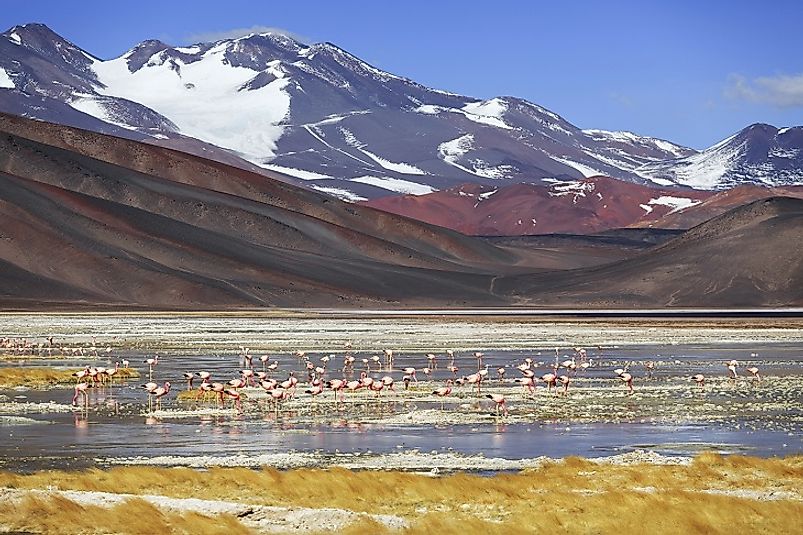Where Does Monte Pissis Rise?

5. Description
The dormant volcano Monte Pissis rises to an elevation of 22,287 feet in the Andes Mountains of Argentina. The mountain is named after the French geographer Pierre Joseph Pissis. It is the third highest mountain in South America after Mount Aconcagua and Mount Ojos del Salada. It is found in a little known area of the Atacama Desert that many mountaineers opt to avoid unless they have a proficient guide. The climbers who do choose to come here have several jump-off points, and one of the most convenient is from Fiambala, a town with good eateries, grocery stores, bakeries, and an outdoor outfitter that knows the mountains. The town also has two Internet cafes and a pharmacy for mountain sickness. The best time to climb here is in the summer from December to March.
4. Historical Role
The first survey of the mountain was completed in 1994 by an Argentine group, though they miscalculated the correct height of the mountain. Then, in 2005, the correct height measurement was achieved by an Austrian using DGPS instrumentation. Two other expeditions made a similar survey in 2006 and 2007. There were no previous reliable roads leading to Mount Pissis, and its location is so remote in the Atacama Desert that few even knew of its existence. In 1937, the first successful ascent was made by two Polish climbers named Szczepanski and Osiecki. The next ascent was not made until 1985, after roads were built by a mining company in the area. Today, Mount Pissis is known and popular among the international mountaineer community and climbing clubs.
3. Modern Significance
Today, Mount Pissis is considered one of the "must-do climbs" in Argentina. It may be secluded, but is definitely worth all of the trouble to conquer it. The awe-inspiring surroundings are a remarkable reminder of the volcano's past eruptions. Endemic species inhabit its volcanic terrain, and sparse vegetation covers the ground. There are many activities to do besides climbing and camping in the area, however. There are ski areas nearby as well, and several other mountains to explore. The Lapostolle Residence is a well-appointed retreat in the Colchagua Valley of Chile where you will find impressive vista views of the surrounding mountains. The area has wineries set in the green valley below the retreat that produce some of the country's world-renowned wines. There are also horseback and bicycle tours in the valley.
2. Habitat
The mountain volcano, although dormant, still has a uniquely volcanic habitat. The topography is dry and colored with lava flows that have been cooled and solidified for thousands of years. Relief is provided by waterfalls pouring down into small lagoons, but care should be taken around these as many of the water sources are contaminated by heavy metals, and some even contain arsenic. For that reason, snow and glacial melt may be the only safe source of water in the area. White patches of snow are seen in the lower altitudes, though heavy glaciers occupy the higher glacier lines and the summit. Vegetation are of the low brush variety here, and consist only of those species that are hardy and ready to be windswept. The mountain has asses, flamingos, guanacos, vicunas, and condors along its slopes, and many other smaller bird species are also to be seen in the area.
1. Threats and Disputes
The government of Argentina has a federal wildlife management and conservation system which dictates the protection of the natural resources which belong to each subordinate provincial government. Although there are national parks and wildlife laws regarding conservation issues here, the government does not have sufficient enforcement to carry out these protection laws. Endangered animals are often left to protect themselves in the designated eco-regions such as national parks and reserves. Mount Pissis has a volcanic landscape that features an arid environment much like the Atacama Desert wherein it is situated. Recently, there has been some improvements in reviving the numbers of endangered species found here. The endemic species in the desert and the high Andean mountain flora and fauna are examples of extreme adaptations that have occurred due to the arid and severe climate of the area in order to survive.











